
The Free Press

Last month, Rachel Richardson—the only black starter on the women’s volleyball team at Duke University—leveled a shocking accusation. She said that during her team’s August 26 match against Brigham Young University, fans inside the BYU arena in Provo, Utah inundated her with racist abuse and threats.
After the match, 19-year-old Richardson told her godmother, Lesa Pamplin, about the incident. Pamplin is a criminal defense attorney running for a county judgeship in Texas, and was not at the game—but the next day, she published a tweet that rocketed the story to national attention: “My Goddaughter is the only black starter for Dukes [sic] volleyball team. While playing yesterday, she was called a [n-word] every time she served. She was threatened by a white male that told her to watch her back going to the team bus. A police officer had to be put by their bench.”
The tweet is no longer available, but it racked up 185,000 likes before it was archived. LeBron James himself responded: “you tell your Goddaughter to stand tall, be proud and continue to be BLACK!!! We are a brotherhood and sisterhood! We have her back. This is not sports.”
Richardson’s story also spread via her father, Marvin Richardson, who is Deputy Director of the Bureau of Alcohol, Tobacco, Firearms and Explosives and who spoke with multiple outlets on behalf of his daughter. In an August 27 story about the incident in the New York Times that named him but not his daughter, he described an alarming, potentially violent scene. Despite an onslaught of slurs, he told the Times, his daughter thought the safest choice was “to keep her head down and continue playing.” He said that “as the crowd got more hyped and the epithets kept coming, she wanted to respond back but she told me she was afraid that, if she did, the raucous crowd could very well turn into a mob mentality.”
Rachel Richardson posted her own account to Twitter on August 28 (archived here), viscerally relaying the horror of the evening. She explained that “my fellow African American teammates and I were targeted and racially heckled throughout the entirety of the match. The slurs and comments grew into threats which caused us to feel unsafe.”
Things got so out of control, she said, that “my teammates and I had to struggle just to get through the rest of the game.” She accused BYU’s coaches and the game’s officials of having “failed to take the necessary steps to stop the unacceptable behavior and create a safe environment.” In an interview with ESPN that aired just a few days later, Richardson said that as the match progressed, the “atmosphere of the student section had changed,” growing “more extreme, more intense.”
The national response to this heinous allegation was swift and righteous. Utah’s governor, Spencer Cox, issued a statement on Twitter (now deleted) expressing his shock and disappointment. “I'm disgusted that this behavior is happening and deeply saddened if others didn’t step up to stop it,” he wrote. “As a society we have to do more to create an atmosphere where racist a**holes like this never feel comfortable attacking others.” For its part, BYU quickly acknowledged that something horrible had happened in the fieldhouse. The day after the game, it published an apologetic statement, saying that the fan deemed responsible for shouting the epithets—who was not a BYU student—had been banned from all university athletic venues.
Unsurprisingly, major media outlets were all over this story. The Times’ coverage set the tone, with the Washington Post and CNN and Sports Illustrated and NPR all publishing similar articles, alongside the predictable think pieces. The incident also had consequences for BYU sports more generally. The head coach of women’s basketball at the University of South Carolina canceled its home opener against BYU. A match between Duke and Rider University’s women’s volleyball teams—scheduled to be played at the BYU arena—was moved to a nearby high school gym in order to provide both teams “the safest atmosphere,” according to Duke’s Director of Athletics, Nina King.
For millions of people watching this story unfold, this was yet another example of the ineradicable stain of American racism, of just how little progress we’ve really made.
Except it didn’t happen.
There is no evidence that the chain of events described by Richardson and her family members occurred. There isn’t even evidence a single slur was hurled at her and her teammates, let alone a terrifying onslaught of them.
All the journalists who credulously reported on this event were wrong—and it was an embarrassing kind of wrong, because the red flags were large, numerous, and flapping loudly. Richardson and her family members reported that racial slurs had been hurled with abandon, loudly and repeatedly, in a crowded gym filled with more than 5,000 people. But the journalists covering this incident never stopped to notice how odd it was that none of these vile slurs were captured by any of the thousands of little handheld cameras in the gym at the time, nor on the bigger cameras recording the match. Nor did they find it strange that in the days following the incident, not a single other eyewitness came forward—none of Richardson’s black teammates, and none of the players for either team.
Instead of heeding the red flags and slowing down to ask some questions, mainstream journalists simply consumed and regurgitated the story as it had been fed to them by Richardson, her godmother, her father, and a major university’s public relations apparatus (which was in DEFCON 1 mode, doing everything it could to broadcast contrition and contain the growing damage to the university’s reputation).
If any of these journalists had demonstrated an iota of curiosity or skepticism—if they’d practiced journalism as it was meant to be practiced—they could have had a major scoop. Instead they acted as stenographers, with terrible results.
Everything that happened here fits into a growing problem in mainstream newsrooms: the injection of political values even into straight reporting, undermining the very purpose of journalism.
Among activist journalists, the basic idea is that appeals to “objectivity”—meaning that the journalist will seek out crucial information and act as a neutral arbiter—doesn’t advance social justice. Instead, these journalists are making the same errors they decry from the past, but in the opposite direction. Journalists used to ignore accusations of racism? Well, now the default should be to accept them at face value. Prior generations of (mostly male) journalists didn’t take sexual assault seriously? Well, now we should #BelieveWomen, and journalists themselves should proudly tweet #MeToo. Let’s not worry too much about the fact that believing things reflexively, or participating in activist movements, has typically been anathema to old-school journalism. Leave those concerns to the rapidly aging dinosaurs who will soon be departing our newsrooms.
Even as major media outlets were ignoring the red flags surrounding the BYU incident, some of their smaller competitors were busy doing actual journalism—and it’s revealing who didn’t botch this story. On August 30, the local paper, the Salt Lake Tribune, published an article questioning whether the correct perpetrator had been identified and banned: “BYU Police Lt. George Besendorfer said Tuesday that based on an initial review of surveillance footage of the crowd, the individual who was banned wasn’t shouting anything while the Duke player was serving.” Besendorfer issued a plea for someone, anyone, to corroborate Richardson’s story. “So far, Besendorfer also said, no one from the student section or elsewhere at the volleyball match last week has come forward to BYU police to report the individual responsible for the slur. He also said no one has come forward to say they heard the slur being shouted during the match. He implored students who heard the comments to come forward.”
But the best reporting actually came from an even smaller upstart. On August 30, the Cougar Chronicle—a conservative campus paper at BYU—published a story by student journalists Luke Hanson and Thomas Stevenson. They reported that according to a source in the athletic department’s office, the search for any evidence of a slur had, thus far, turned up zilch. Moreover, Hanson and Stevenson reached out to a number of spectators, and they, too, said they heard nothing unusual.
This is all Journalism 101—but the big guys couldn’t be bothered. What’s more, the Chronicle writers revealed that, according to their source in the athletic department, the man who was fingered as the culprit was not only innocent but “mentally challenged,” and was punished to “appease a mob.”
Last Friday, their reporting was validated.
BYU issued another statement that completely imploded the dominant storyline about this incident. The university explained that it had conducted a thorough investigation of the evening’s game, including extensive review of the available video footage and interviews with more than 50 individuals in attendance, and had not found evidence of a single fan yelling a single slur. The ban on the innocent fan had been lifted.
By this point, between the original New York Times story and a tepid followup, a combined five reporters and researchers had been pantsed by a small student paper. If all this provoked any soul-searching on the part of the Times, it was unclear from its report on BYU’s findings.
Remarkably, their most recent story treated the events as unresolved: “B.Y.U. did not directly address why its findings contradicted the account by Richardson, and the statements by both universities left questions unanswered.” It also included a statement from Duke’s athletic director saying the university stood by the volleyball team. The story ends with a reminder that at the overwhelmingly Mormon school, less than 1 percent of students are black, and that a recent report highlighted the university’s diversity issues. It’s unclear exactly why this is relevant; the point seems to be for the Times to advertise that it understands racism is a serious problem at BYU, and that even if the school were not guilty of it this time, everyone knows the university’s soul is not entirely spotless.
The BYU non-brouhaha brouhaha is part of a growing problem. From the outright criminal fraud of Jussie Smollett—in which some of the most prominent journalists in the world accepted a storyline that never really made much sense—to the unwarranted piling on of the Covington Catholic High School kids, there’s an established pattern of journalists being far too credulous when these incidents first burst onto the scene.
There are real-world consequences to this sort of shoddy reporting, not just for newspapers’ reputations and their pocketbooks (Nicholas Sandmann, the face of the Covington controversy, sued and settled with CNN, the Washington Post, and NBC), but for those caught in the crossfire. In this case, a vulnerable, innocent young man was wrongly accused of horrendous acts, and an entire student body was slandered. Millions of people will continue to believe this incident occurred, because debunkings never travel a tenth as far and wide as misinformation does.
It won’t take some radical revolution for journalists to better cover fast-developing, controversial incidents involving race and other hot-button issues. All they have to do is rediscover norms that are already there, embedded in journalistic tradition. The best, oldest-school newspaper editors—a truly dying breed—constantly pester cub reporters to make that one extra call, ask that one extra question, follow that one extra unlikely lead. They do this all in the service of making sure their organization prints the best, most accurate version of the news (and doesn’t get sued). They can adhere to these norms without becoming a shill for the powerful. It’s simply a matter of approaching a story with curiosity and skepticism, of not believing they are the advocate for one side in a conflict—no matter how righteous and obvious the battle lines may seem at first glance.
A version of this story first appeared in Jesse’s Substack.

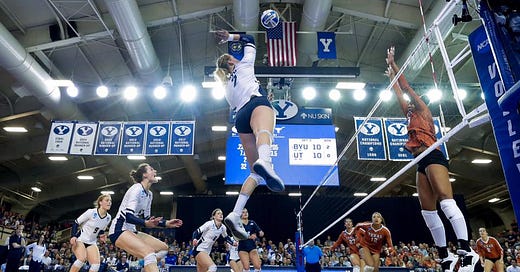


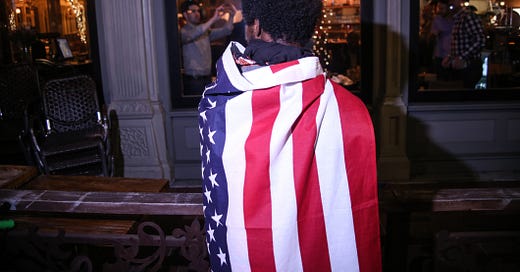
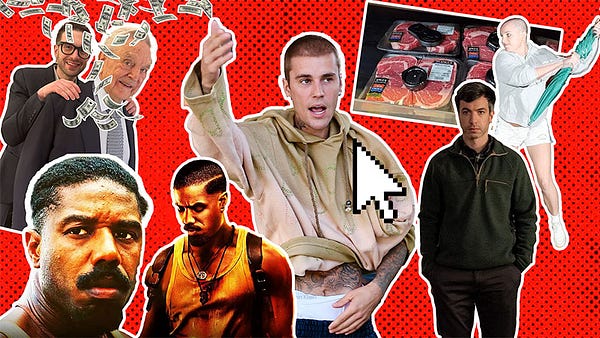

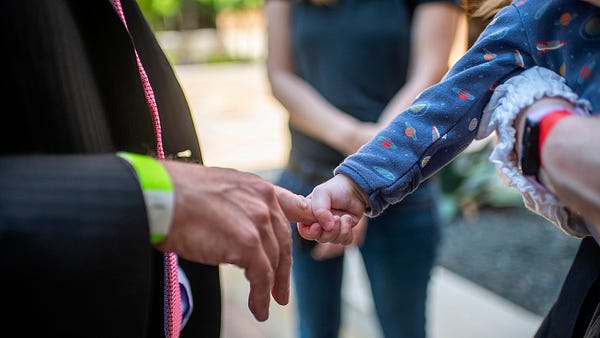

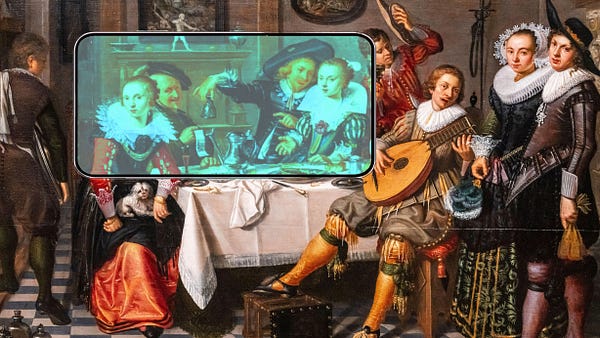



I am glad Jesse Singal gave credit to the two Cougar Chronicle reporters who debunked the story but why no bylines of the reporters who published the lies? Yes the names of the news outlets were mentioned but the names of the liars need to be repeated juxtaposed with appropriate condemnation.
Thank god someone bothers to check facts. Thank you to all the honest journalists. The NYTimes is good as fishwrap.